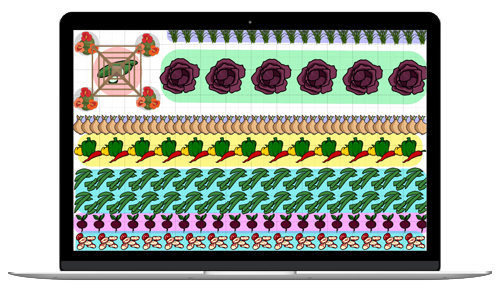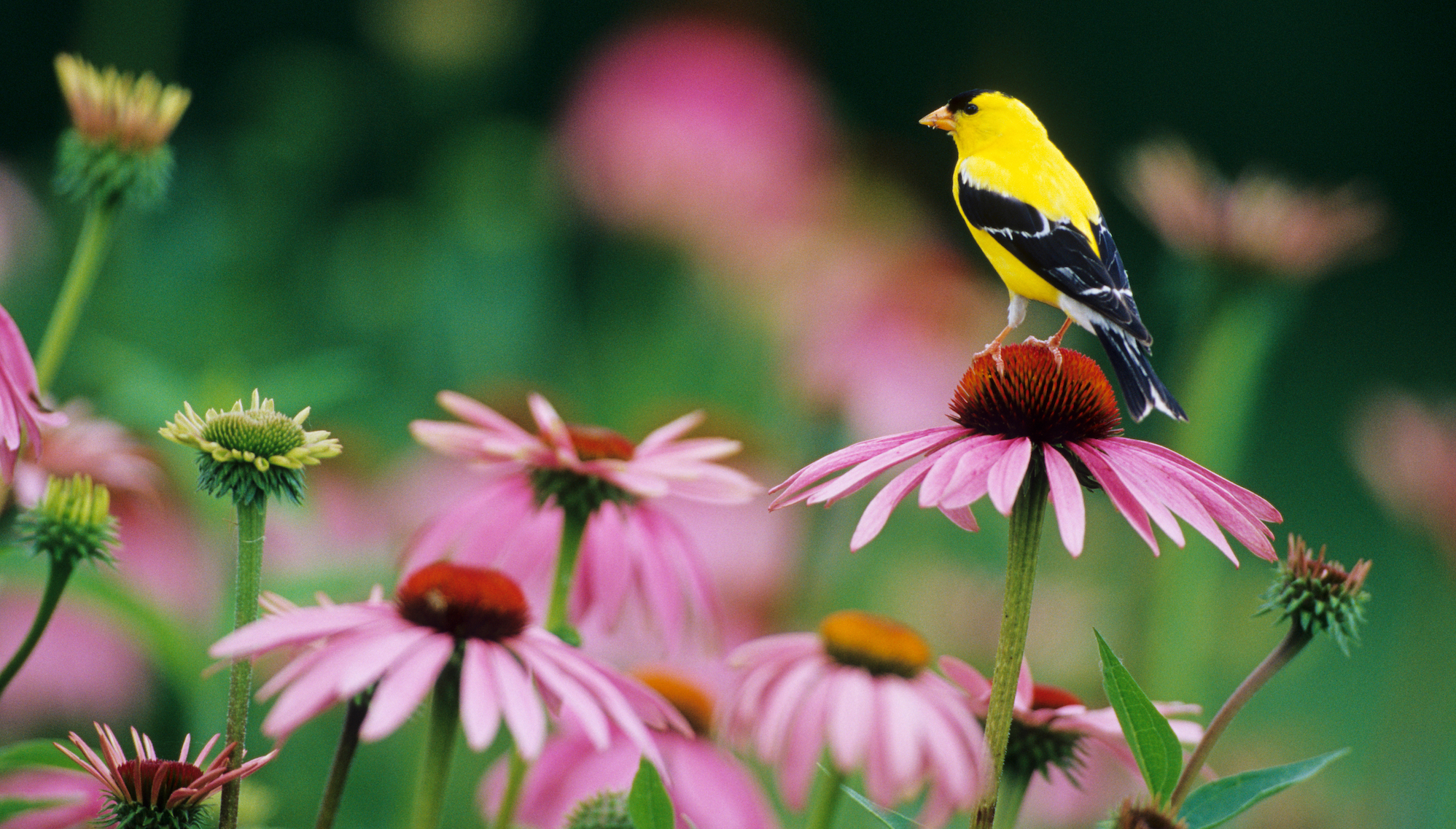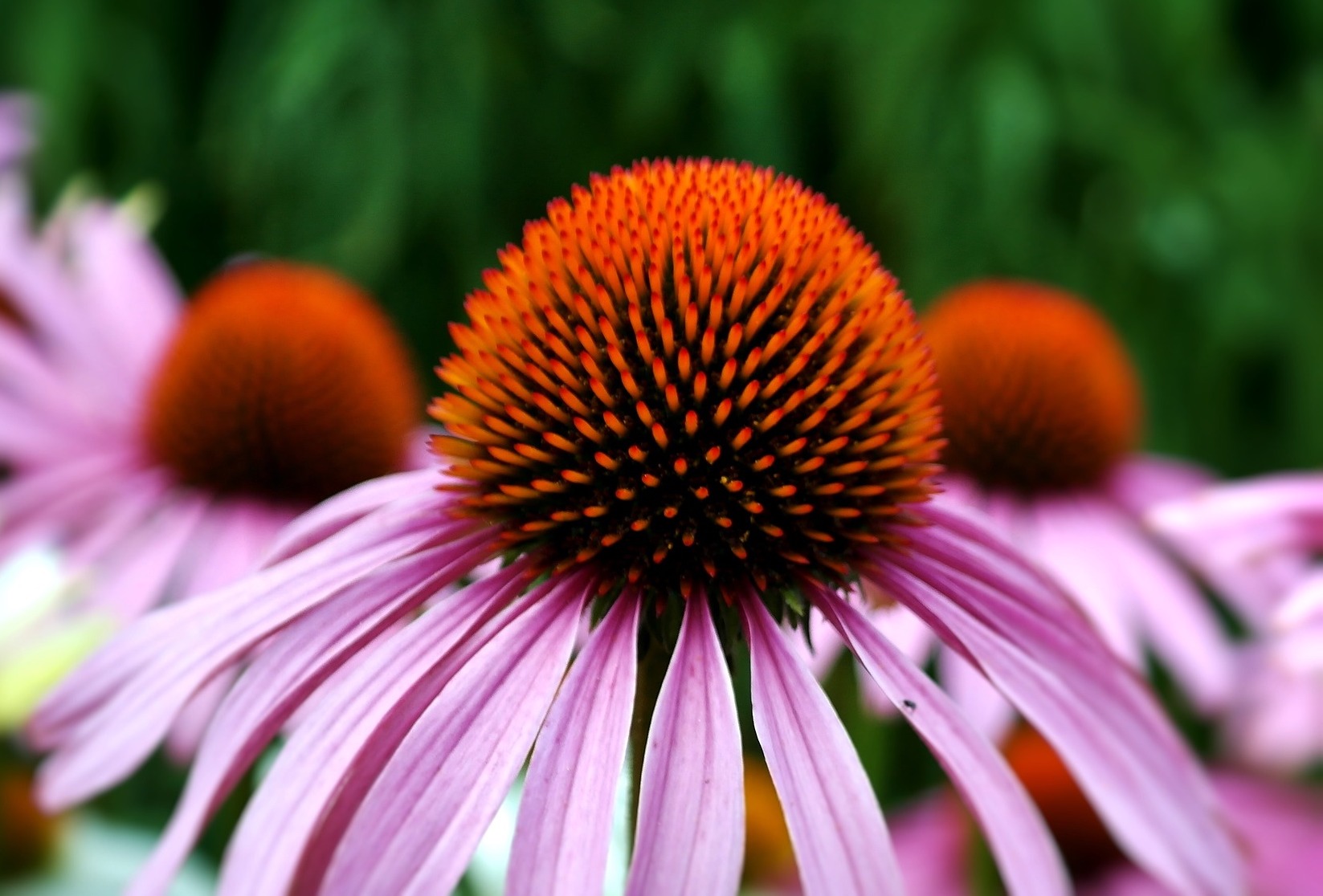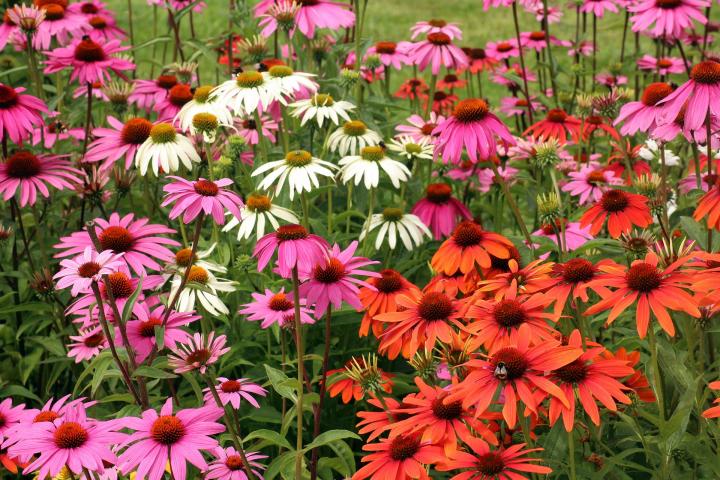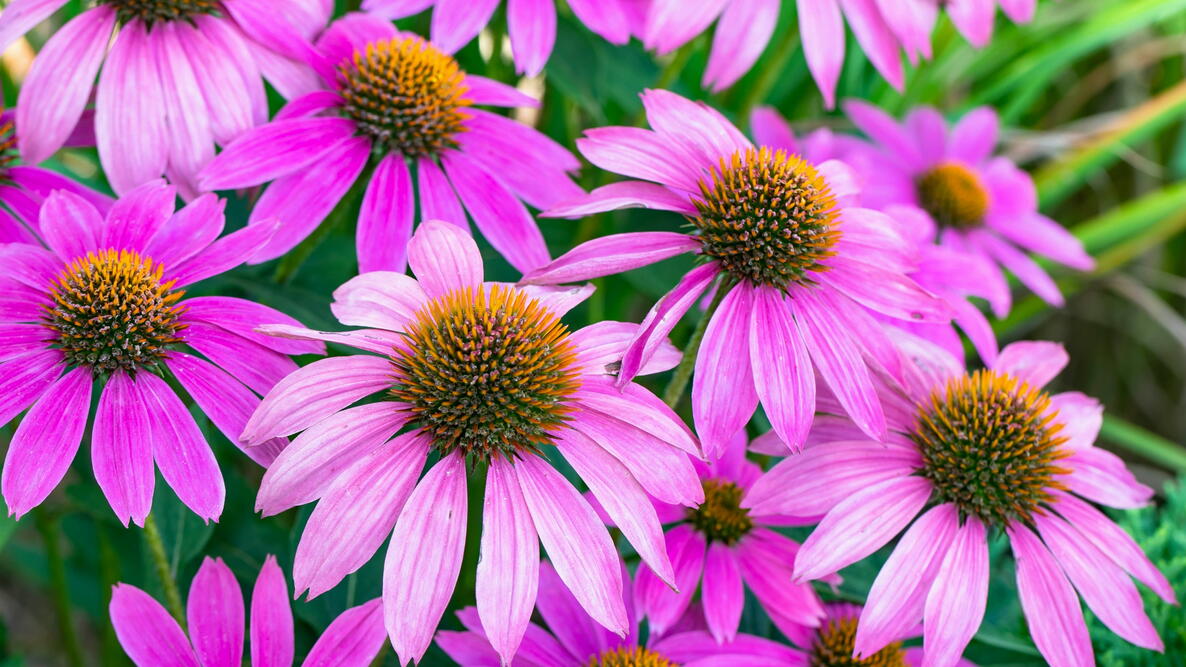
Planting, Growing, and Caring for Coneflowers
The Almanac Garden Planner - Use It Free for 7 Days!
Plan your 2025 garden with our award-winning Garden Planner.
Types
These are native, unless noted …
- ‘Robert Bloom’ (Echinacea purpurea): red-purple petals; prominent, dark orange centers
- ‘Finale White’ (E. purpurea): creamy-white petals; greenish-brown centers
- Narrow-leaf coneflower (E. augustifolia): similar to E. purpurea
- Pale purple coneflower (E. pallida); native to Ontario
- Sanguine purple coneflower (E. sanguinea): red-purple petals with streaks (sanguinea, Latin for “blood” refers to streaks in petals; native to southern states
- Smooth purple coneflower (E. laevigata): narrow, drooping, pale-pink petals; endangered
- Tennessee coneflower (E. tennesseensis): upturned mauve petals; greenish-pink centers
- Topeka purple coneflower (E. atrorubens): deep pink short petals; rare
- Wavy leaf coneflower (E. simulata): yellow pollen distinguishes it from E. pallida (white pollen)
- Yellow coneflower (E. paradoxa), aka Ozark coneflower: yellow petals
- ‘Cleopatra’ (E. hybrid): soft yellow petals; copper-green centers
Read about our favorite coneflower varieties here!
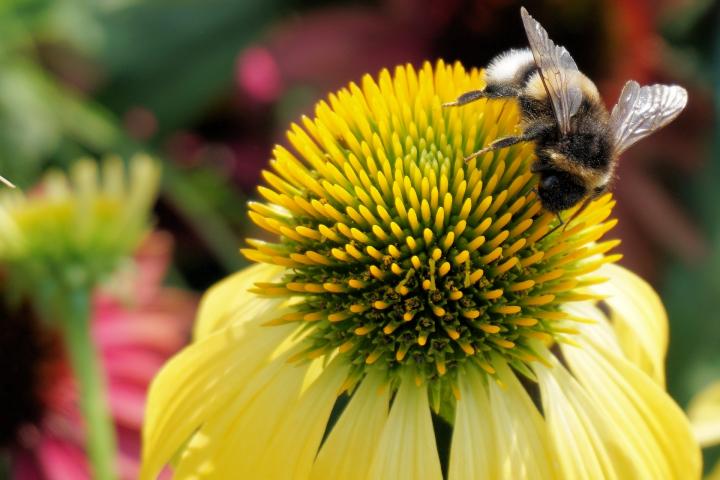
ADVERTISEMENT
Can you plant Coneflowers in September? I'm in southern VA at NC border. Zone 8a
Typically, you can productively plant coneflowers in the fall. The key is to allow at least six weeks, more if possible, for the plant to establish its roots before the first frost.
I’m in zone 7b (New York City). I planted my coneflower last summer and watered it regularly until it wilted after the first frost. I know it’s not even April yet, but several other perennials who share a bed with the coneflower (salvia, yarrow, aster) have already developed plenty of lush and healthy-looking new spring foliage, while the coneflower and both varieties of coreopsis still just look like dead plants.
Are these species just later to come back from dormancy in the spring? Or should I be worried they won’t come back at all? Thanks!
If I deadhead my black eyed Susan can I just put the head on the ground where I have a large bed of them?
It is fine to place a few spent flowers on the ground nearby if you are just passing through and find a few blossoms that need deadheading. If you have a lot of deadheading to do, however, one consideration is that in certain cases, the plant debris may harbor insects/diseases, or encourage them, so it might be best to dispose of the spent flowers elsewhere, such as in the compost pile (unless the flowers are obviously diseased), or, if you have access to a wilder area such as a woods or meadow, you can place the spent flowers there for wildlife to enjoy. Also, if you place on the ground cut flowers that have already formed seeds, you may find volunteer seedlings popping up the next growing season (although newer varieties may have sterile seeds). Hope this helps!
Typo: Fertilizer every couple of seeks with a water-soluble 10-10-10 product
Thanks, it takes a village!
Can I plant cone flower plants in late summer/fall? I have seeds I want to start indoors.
You can plant in early spring or early fall. Just be sure your new plants have at least 6 weeks to establish roots before the first expected frost or they might not come back in the spring.
This year, I've noticed some/most of my coneflower plant's flower centers are not spiky. The centers are brown and feel and look mushy (rotting?) I've inspected the whole plants and cannot see any insects. What could be causing this. Thanks!

